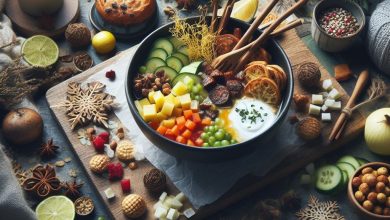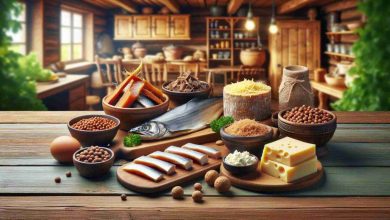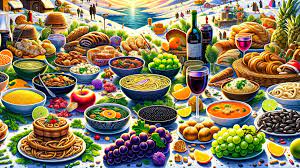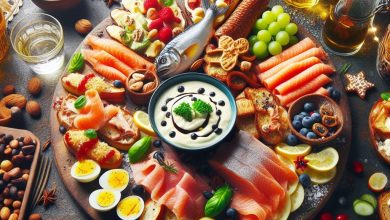NORWEGIAN CUISINE: WHEN “EATING” IS LIKE “LOVE”
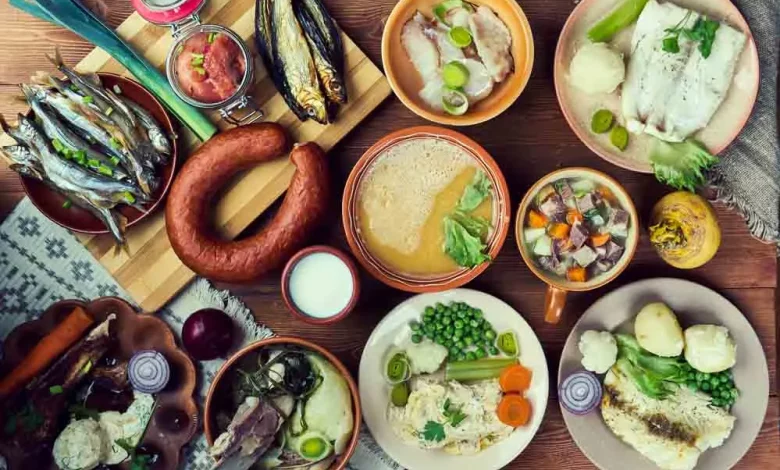
Voltaire argued that eating would be the most tiresome activity in our lives if the Creator had not made it both a pleasure and a necessity. The maximum concentration of pleasure today can be found in northern cuisine, which is gaining more and more victories in the world “culinary field”. And the secret of such success is incredibly simple – traditional recipes, high-quality local products and talented chefs.
If earlier Norwegians went on gastronomic tours, choosing France and Italy, today a whole line of gourmets and simply gluttons lines up in front of the Norwegian border. After all, recent years have become revolutionary for Norwegian cuisine, and this became possible thanks to the appearance in restaurants and on store shelves of not only high-quality, but also environmentally friendly products.
Until the beginning of the last century, Norway was considered one of the poorest agricultural countries, whose residents relied exclusively on local resources. They milked cows, made jam and dried fish. But over time, everything changed.
Simple dishes became delicacies, and a new word appeared in the vocabulary of Norwegian culinary specialists – “kortreist”, which means that the product was literally brought from a neighboring village. In other words, such products do not require long-term transportation, which not only preserves their freshness, but also significantly reduces harmful emissions that pollute the environment.
In addition, Norwegian food supply farms have adopted new production technologies, but at the same time put ancient recipes at the forefront. So if, in the minds of many countries, a balanced diet is a cheeseburger in one hand and a hamburger in the other, then for Norwegians this state of affairs is unacceptable.

The main components of their national cuisine are fish, meat, vegetables and milk. In English, hearty breakfasts, snack-style lunches, the main dish of which are smörbrød sandwiches, and an impressive dinner between 17:00 and 18:00. Yes, don’t forget that the life of almost every Norwegian is subject to the so-called “kus” phenomenon, which allows them from time to time to disregard the rules of healthy eating and enjoy a cup of aromatic coffee with a huge piece of pie an hour before midnight.
So in the case of the “land of the midnight sun”, the appetite comes while driving. 2000 kilometers is more than enough time to get hungry and immerse yourself in an adventure that will be a real delight for the taste buds, bliss for the stomach and a delight for the eyes.
Norwegian productivity
Norwegians are not afraid of work. No, they work no more than is provided for by current legislation. However, their work is incredibly productive. And this is a considerable merit of those products with which the inhabitants of the Northern Hemisphere replenish their internal energy reserves and ensure far from sluggish chemical reactions in the body. And the first place rightfully goes to the fish. How else? After all, the length of the Norwegian coastline exceeds 25 thousand kilometers!
A fishing spot is never empty
Historical chronicles indicate that Norwegian fishermen were engaged in supplying seafood to foreign merchants at the beginning of the 12th century. Today Norway is in second place in the world in terms of volumes of fish exported.
And the main export items are salmon and cod. The latter is a source of pride for every self-respecting Norwegian. A very popular dried version of cod is called “klippfisk” or its variant “terrfisk”. Dried cod is soaked, boiled with spices and served with potatoes, fried bacon, peas, mustard and goat cheese. The dish is called “lutefisk” and can cause ecstasy in a true gourmet.
There is also the spicy herring “boknafisk”, which is served with jacket potatoes, sandwiches with a mixture of caviar and cod liver “fiskemelje”, meatballs “fiskeboller” with bechamel sauce, the well-known herring with onions “sursild”, soup “fiskesuppe” from cream and salmon, as well as his majesty salmon – marinated (“gravlax”) and smoked (“reclax”). The most adventurous eaters can try the legendary dish “rakfisk”, which is actually fermented trout, which combines divine taste and hellish smell.
Yes, it can be said that in Norway there is a cult of fish and seafood. This is evidenced by the fact that the “Book of Seafood” published by the Norwegian Gastronomic Institute in Stavanger became a bestseller at home and was included in the top 5 best publications for culinary specialists at an exhibition in Paris. So in the future, when choosing fish, take the advice of the Norwegians: the scales should shine, the smell should inspire, the gills should be red, and the look should be clear.

Norway – the temptation of a vegetarian
The Norwegian does not live by fish alone. Tender and incredibly juicy, Norwegian lamb is considered one of the best in the world. And all because local lambs crunch on protein-rich herbs and drink crystal clear running water in pastures far from the cities among the beauty of virgin nature.
Norwegians know a lot about cooking meat. You can verify this by trying just three dishes: baked lamb with stewed cabbage (“forikol”), leg of lamb “fenalor” and beef chops “kjetboller” with a sauce of your choice. Equally impressive are the snow partridge “rip”, Christmas “ribbe” (roast pork) and “pinnekjött” (salted and dried lamb ribs). Traditionally, a special dish called “smalakhove” is reserved for daredevils – nothing more than a stewed sheep’s head.
Norwegian milk is not far from the udder
And again, pristine nature, clean waters and a first-class environmental component come to the aid of the Norwegians. Dairy products here are beyond praise. That is why, probably, in Norway the percentage of those people who suffer from lactose intolerance is the lowest on the planet. And if you are going to Norway to find a way to its heart through your stomach, then under no circumstances will you be able to pass by Norwegian cheeses.
The highlight of the program is Brunust sheep cheese with a sweetish aftertaste. This caramelized product is somewhat reminiscent of boiled condensed milk and comes in different colors – the range varies from yellow to downright chocolate. Many connoisseurs of good cuisine may find this cheese too exotic, but just try not to lick your fingers when you put slices of Brunost on a traditional waffle!

